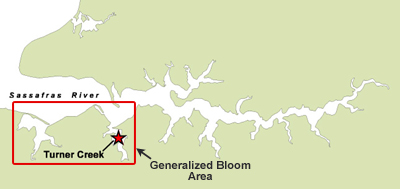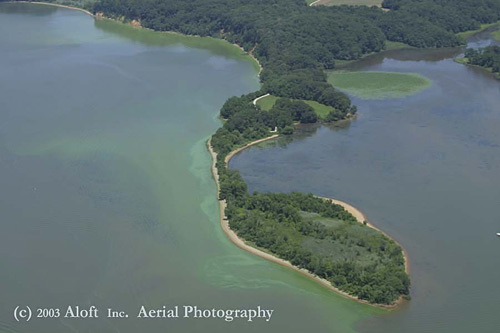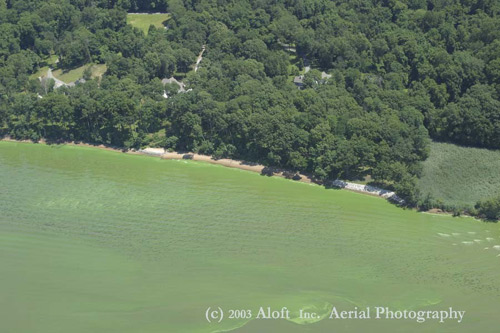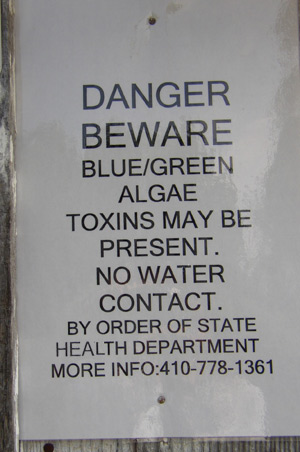|
July 29, 2003
Sassafras River Algal Bloom Conditions Intensify and Expand. |
|||||
Maryland Department of Natural Resources surveyed the blue-green algal bloom on the Sassafras River on Monday, July 28th , and collected samples for further analysis. The bloom area identified in Turner’s Creek near the boat launch on July 18th by Maryland Department of the Environment has expanded downstream through the main channel of the Sassafras River and into Lloyd’s Creek.
Blue-green algae were evident in lower concentrations throughout much of the main channel of the lower Sassafras River. Aerial views of the bloom in the vicinity of Lloyd’s Creek caught the eye and camera of Hunter Harrison (Aloft Inc) on July 25th and photographs were graciously provided courtesy of his efforts further supporting the DNR survey findings this week.
Blue-green algae naturally occur in tidal freshwater portions of the Chesapeake Bay and its tributaries. However, algal blooms may periodically use up oxygen, causing fish to suffocate and die. Affected waters may also appear as if a blue-green to yellow-green paint is floating on the surface of the water. Major blue-green algae blooms were last reported in the region in 2000. A Press Release regarding conditions on the Sassafras River was published by Maryland Department of the Environment July 22nd and may be referenced for further information on blue-green algal blooms in the upper Chesapeake Bay. A fact sheet on Microcystis and the 2000 bloom can be found on the Department of Natural Resources’ website. Maryland Departments of Natural Resources and Environment will continue to monitor the situation and publish updates to the website as necessary. To report a fish kill or fish health related event, please call the Fish Health Hotline at (888) 584-3110, 24 hours a day. |




